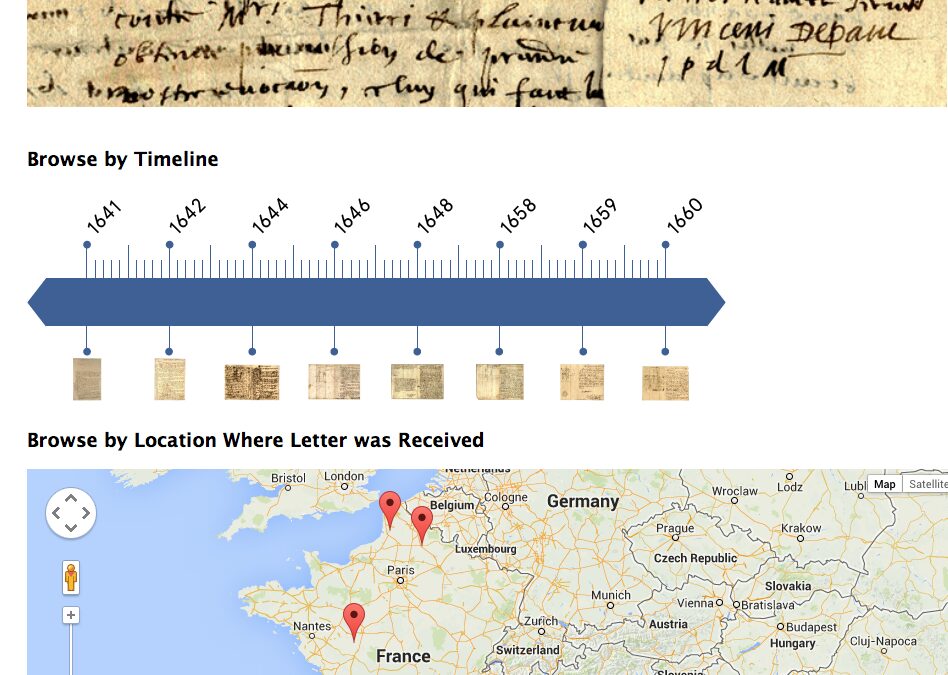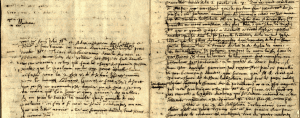Readers of FamVin know that Vincent wrote some 30,000 letters. Few of us will ever read even a small fraction of those that survived. I was once privileged in Paris to hold one of his letters in my hands. The feelings that arose are hard to put into words.It was a different level of connection. that I have not forgotten. It was similar to walking outside the house at the foot of Manhattan Island where Elizabeth Seton had lived.
DePaul University offers a different kind of experience of Vincent through his letters. Click on the graphic below to visit one of these holographic images with the realization it was written in 1648. Scroll down the page for not only the French text but also the English translation done by Pierre Coste.
DePaul University’s collection of the handwritten letters of St. Vincent de Paul (1581-1660) represents the largest of the saint’s extant holographic documents outside of Europe, and is the cornerstone of DePaul’s Vincentian Studies Collection, a multidisciplinary collection of resources pertaining to the study of St. Vincent and the Vincentian Family.
Each letter includes a transcription and translation of the respective text.
These letters range in date from 1641 to 1660, a fertile period during Vincent’s life during which his influence was at its height. By 1640, he was one of the leading figures in the French Counter-Reformation, and had founded the Ladies of Charity (1617), the Congregation of the Mission (1625), and the Daughters of Charity (1633). In his final two decades, Vincent would be appointed to the royal Council of Conscience, grapple with the heresy of Jansenism, and spread his religious message of charity through Europe, into North Africa, to as far away as Madagascar. By his death on September 27, 1660, he was the administrator of a vast network of religious and charitable endeavors, and one of the most well-known and revered figures in France.
To view any of these letters, simply click on the timeline date, or letter itself. In addition, each marker on the European map represents the location of a letter, and clicking on a marker will pull up an individual letter.
Each letter includes a transcription and translation of the respective text. The transcriptions are taken from Vincent de Paul: Correspondence, Entretiens, Documents (Librairie Lecoffre, 1920-1925), edited by Pierre Coste, C.M., with the exception of the 1641 letter to Sylvestre Crusy de Marcillac, which was transcribed by John E. Rybolt, C.M. The translations are taken from Vincent de Paul: Correspondence, Conferences, Documents (New City Press, 1985-2010), by the Vincent Translation Project. A link to the original transcription or translation is available in the record of each letter, if available.
This collection was made possible with the kind assistance of DePaul University’s Office of Mission and Values, and the Vincentian Studies Institute.
Tags: archives, dePaul (De Paul University), Featured, Vincent


